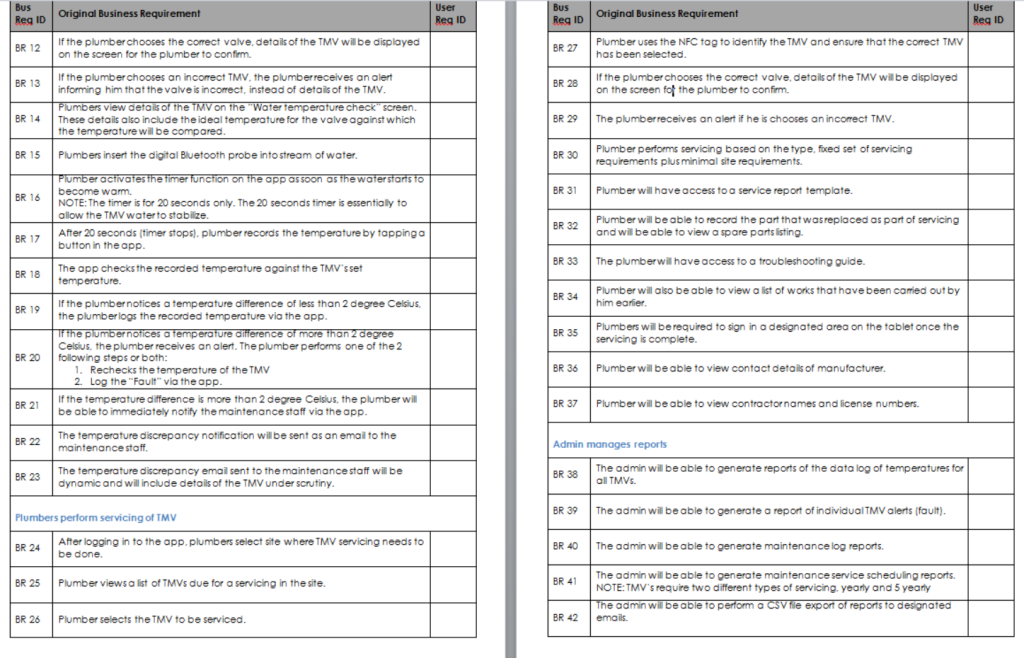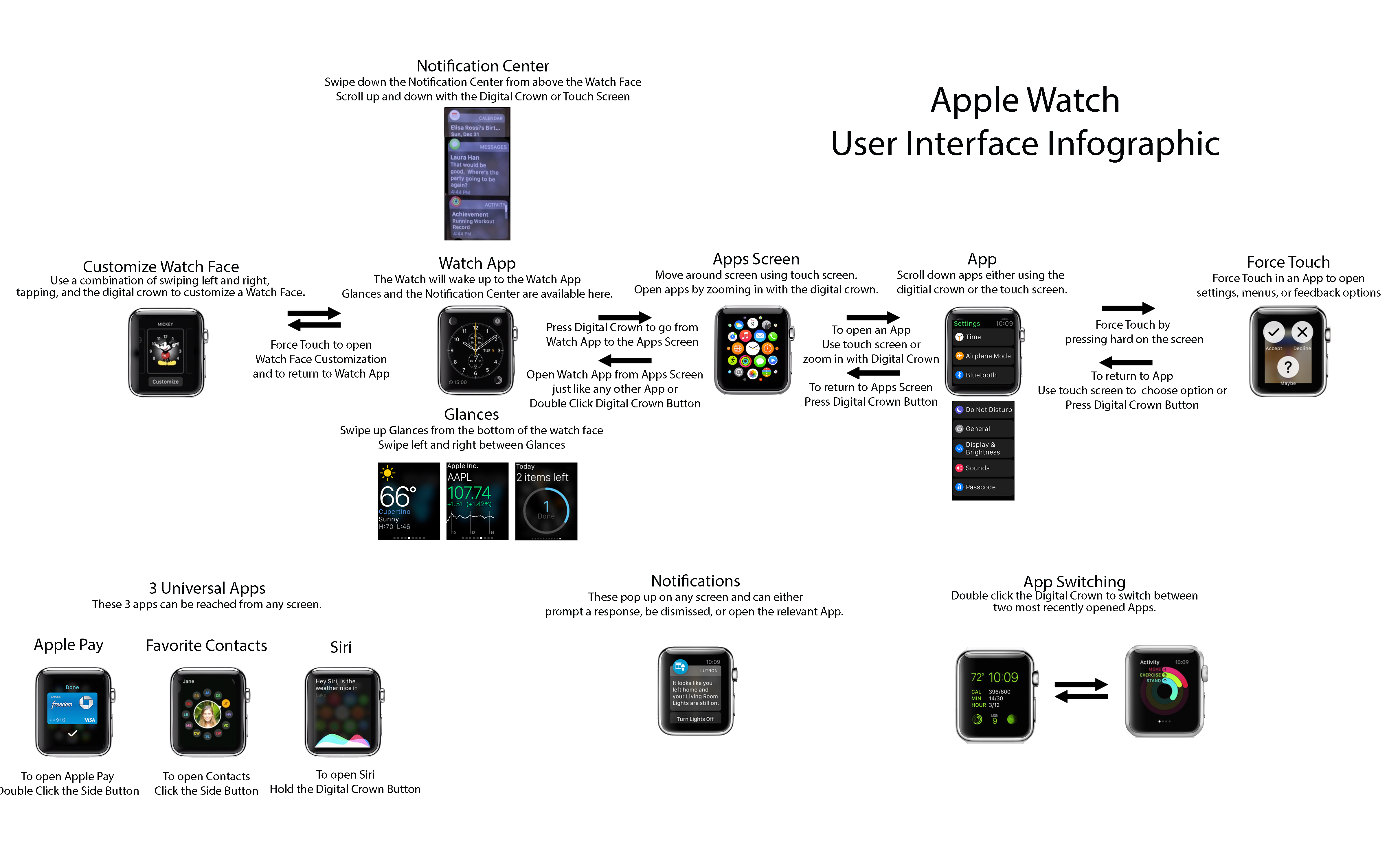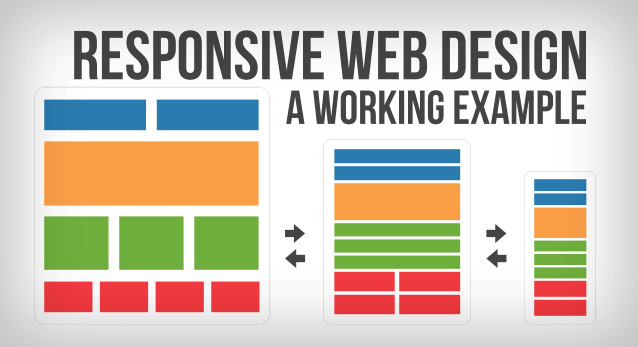Free resources for app creators
Why App Prototyping: See It Before You Build It (SB4UB)
Mobile App Prototyping
Everyone has got a great mobile app idea, but it’s quite challenging to do market research and raise funds for your app idea.
At Appomate, we understood that this a common problem faced by app entrepreneurs so we designed an approach called See It Before You Build It (SB4UB).
(SB4UB) helps app entrepreneurs get a visual representation of how the app will look before even developing it.
How SB4UB helps to develop a better mobile app with market research?
- Helps you better understand your customers
- Know about your competitors and find how they approach the market
- Test your product before launch
- Take user feedback and incorporate in the development cycle
How raising funds for your mobile app can easier with SB4UB?
Most of us approach mobile app development companies to get development estimation. The development cost in most parts of Australia especially in Melbourne, Sydney might vary anywhere from $50,000 to $500,000 to build your app idea.
But we know it’s difficult for a bootstrapped app startup to raise funds to build the app. When you have a validated app idea, you are in a dire need to get the app in front of your audience and get user feedback for iteration.
With SB4UB raising funds for your app startup becomes easy.
But how to go about it?
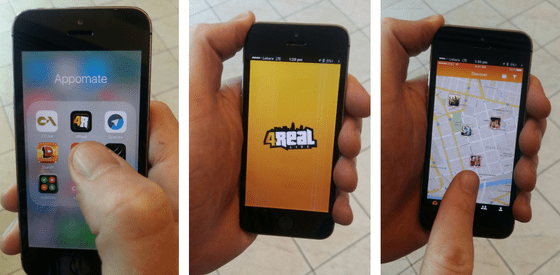
At Appomate, we’ve helped a number of mobile app entrepreneurs take their simple app idea and turn it into a successful app startup using SB4UB approach.
See It Before You Build It (SB4UB) is a 4-6 week process where our Appomate’s development team works together closely with the app entrepreneurs. During this process, we come up with app documentation, app prototyping – replicating the app screens. We then use these assets to build an application prototype that can be used to raise capital for your app startup from investors, apply for government grants or use for marketing purposes.
We call this “See It Before You Build It” (SB4UB)
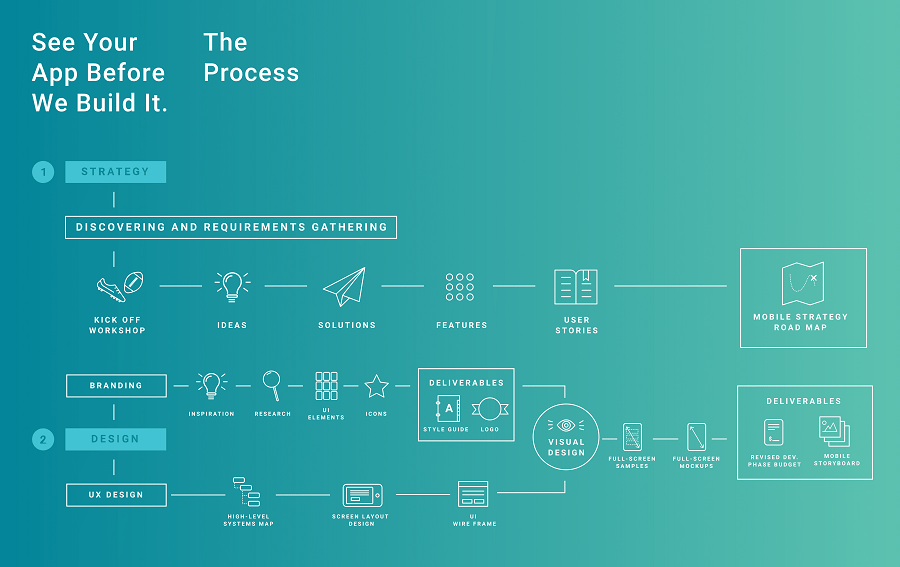 Click here to download See It Before You Build It (SB4UB) framework for your App.
Click here to download See It Before You Build It (SB4UB) framework for your App.
The process is simple. We work with each prospective “app-renuer” to develop a Business Requirement Document which outlines how the app will work, each feature specifications, create wireframes. We also develop actual app screens that will be used within the app once it’s completed. This helps the app entrepreneurs to get a perspective of how their app will look like and also gives them a fair estimation of mobile app development.
These items are necessary when creating an app. Building an app is analogous to building a house, See It Before You Build It (SB4UB) steps are very similar to creating building blueprints, plumbing and electrical wiring information, home’s interior designing, etc.
Without these necessities, it would be ill-advised to start with the construction process like nailing wood, pouring concrete, etc. This shows the significance of starting your app idea with the SB4UB process.
The process most commonly takes 4-6 weeks, and many of our clients have been successful taking their app idea to the next level after raising funds via online marketing campaigns, government rebates, crowdfunding or attracting investment partners.
If you’d like to learn more, simply enter your details below or contact our friendly team on 1300 781 794
Understanding Your Minimum Viable Product (MVP) Is Key To Success – Complete Guide
A Minimum Viable Product (MVP) means building a product with basic yet necessary features that allows you to release it to the market immediately. Below are the reasons why MVP is Key to your product success.
At Appomate we’re often asked to build Apps to supplement or complement an existing product, potentially to improve app business processes or create a new revenue stream. In such cases, building an MVP is advantageous because it involves less effort enabling the appreneurs to test their app idea with potential customers/users.
Most of appreneurs approach us with App projects which is in the “idea” phase. At this phase the apprenuers have typically done some market or user research to validate their idea, but when it comes to the budget that’s another story.
We deal with Appreneurs who often only have very little money raised, potentially have investors ready to go when the idea is further along or they are yet to start raising funds, it’s at this point we ask them the below question:
“Have you heard the concept of MVP?”
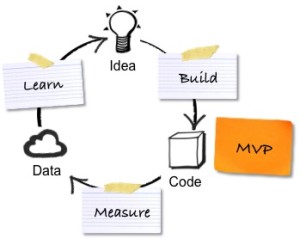
What is “Minimum Viable Product”?
Now, if you haven’t read the Lean Startup yet, add it to your list. It’s the foundation for many processes that companies use.
Minimum Viable Product or MVP is more of a concept or philosophy than a specific process or technique. The idea is to get something to market as soon as possible, get real people using it and then iterate or add features based on user feedback instead of assumptions.
It’s very tricky to actually execute a minimum viable product launch, however. No one wants to put anything but their best foot forward, so why would anyone put something out into the world that’s… unfinished? (Gasp!).
To note, there’s a misconception that an MVP is unpolished or unfinished. That’s not the case. It may not have all the features you dreamed of, but it has all the functionality you need.
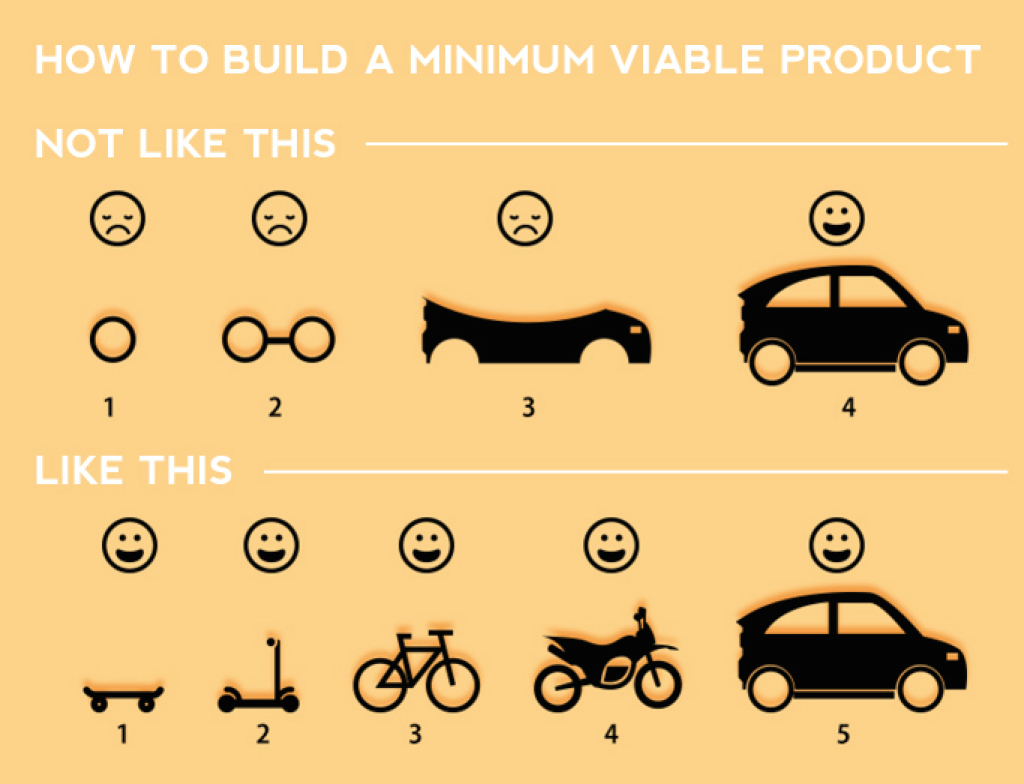
An additional factor is that app businesses shouldn’t waste valuable time and resources on anything that isn’t essential to their business.
The only way to really know what your app needs is to see how people are using it.
The core methodology is “Build. Measure. Learn.” The point is to learn quickly and iterate.
Here’s an Example
Think back to the first time you used Facebook.
Did Facebook look like it does today?
Do you think that Mark Zuckerberg, in his Harvard dorm room, envisioned the Facebook that exists now?
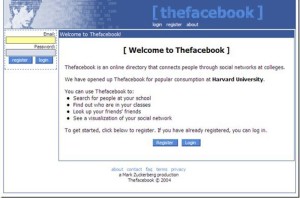
How could he? In fact, some technology that Facebook relies on wasn’t even available back then.
Then, how did Facebook turn to be a social giant now? Initially, Facebook rolled out an MVP to Harvard students and the prototype was tested for user feedback. In fact, some technology that Facebook relies on wasn’t even available back then.
One of the reasons Facebook is especially successful is that they’re constantly assessing, iterating and evolving. In order for Facebook to be successful, they weren’t able to build a product, “take it to market” it and then sit back while the dollars rolled in.
To this day, Facebook develop the code on all of its platforms (website, iOS, Android, etc.) twice a day, every day!
Can you remember about using Twitter for the first time?
Twitter didn’t start out with a “retweet” button, but after the company realized that many people were copying other user’s tweets and pasting them into their Twitter feeds manually they incorporated this into their app.
Instagram? Remember when Instagram had no video? But then Vine came along and everyone was talking about it. So the decision was made to incorporate video to continue to gain the marketplace. Remember when there was no Instagram website? Or no Android version? I do, and my nieces and nephews all had Instagram before I did so I was certainly not an “early adopter” the app.
Instagram’s concept was that they could do better by getting to market, and they’d build an Android version and a web version while iOS users started using the product. They were out there, even though they weren’t finished.
What does MVP mean for your business/app idea?
The term MVP in itself is quite broad. For an app where do you start? Where do you stop? What functions should you include and which can you do without for your launch? Which features are essential?
Below are some guidelines you can use to guide you through that process.
- The App has to look and feel finished. This means it should be fully branded and designed, it shouldn’t have bugs, and every visible button and link should work. First impressions and trust are still immeasurably important– maybe even more so for an MVP approach
- The App’s core functions need to work. For example, if your app is a photo-sharing service, it needs to be able to share photos. It doesn’t need to have full tagging capabilities or social media sharing options yet, but it needs to do what it’s supposed to do.
- Anything that doesn’t absolutely require automation can begin as a manual process. Let’s face it, it’s unlikely your app will generate a million users in your first month. No doubt it would be nice to have a custom-built automated customer service platform, perhaps with live chat, but it’s probably smarter to launch phase one of your app with a simple email address or phone number that users can contact for assistance.
- Implementing change needs to be as simple as possible, with few barriers. When businesses decide to release a “phase one”, “light” or BETA versions of their app with the intention of having it grow, The key is you need to react to how people currently using it. You have to keep improving it. If something clearly needs to be added or changed you need to do this as rapid as possible to keep your users engaged and open to recommending your app to others.
- Owners and Investors need to keep an open mind. While the MVP process is highly successful in app development and technology circles there’s still a lot of trial and error involved. If the decision-makers are fighting the process the whole way, it will surely fail.
Understanding MVP is the key to success: Benefits
- Having a Minimum Viable Product (MVP) helps you to validate your App ideas
- Ready to release the simpler version of your product to the market
- Test the necessary features for your target audience.
- Helps you understand your buyer intent, persona and their preferences
- Helps you to get the user feedback immediately which you can incorporate in your product instantly
Why consider an MVP strategy?
The reality is that many app entrepreneurs should rethink what it means to launch an app.
Traditional methods of product launches are suffering as products are coming to market faster than ever. Developing your idea for 2 years in a dark room, all in preparation for the “Big Reveal” isn’t as smart of a move as it used to be, especially if your competitor launches their product while you’re constantly fine-tuning yours.
If I’ve piqued your interest (and I’m sure hope I have), please research the topic a little more. You’ll find that tonnes of people are talking about it, and a lot of really successful entrepreneurs believe strongly in it.
If you’d like to share your app idea with one of our team members who understand the concept of the MVP and discuss how you could roll out your app idea with this strategy in mind call us today on 1300 781 794
Xamarin vs PhoneGap: Which Cross Platform Software is right for You?
As Startup founder or developer, we always had this question?
Which cross-platform software is right for my app/app business?
With the increasing trend in using cross-platform software, Xamarin and PhoneGap seem to top the charts.
This is definitely because of two reasons:
- The developer can create one source code for an app, which the platform then converts into the code for the native environment.
- The developer can reuse code that’s already been written, letting the platform handle the compiling. This makes it faster and more cost-effective.
Building apps in HTML5, HTML5 packaged (PhoneGap), Xamarin or even going Native (iOS/Java) each has distinct advantages and disadvantages when building an app.
It’s up to each “app-renuer” to decide the level of look, feel and functions they desire for their app, versus the money and time they are willing to spend towards it.
While it’s obvious that there are no universal app solutions with each any app project having different requirements we have found more and more projects are being developed on Xamarin since they were acquired by Microsoft in March 2016.
We recently posted an article about Xamarin and how using it can reduce the time and budget requirements when building an app, but how does Xamarin compare to other cross-platform tools like PhoneGap?
Xamarin
Xamarin is a C# (Windows) based solution for cross-platform apps development. If you are developing using Xamarin, you are making apps in a native language which means increased reliability, flexibility, and faster performance.
Xamarin is widely used for development, testing and monitoring of cross-platform apps.
Using the capabilities of C# and wrapping all native iOS and Android libraries allow Xamarin to make changes, over the course of the project lifetime and making improvements to the application rather quickly.
The code base is shared so the main effort needs to be focused on UI implementation for different platforms. Since all the native features are supported in the end apps, they look and perform in a native way.
Xamarin provides us two clear advantages:
- It saves time in development which in turn reduces your clients’ overall costs.
- We can efficiently create compelling native experiences across iOS, Android and Windows Mobile using a common codebase (C#) then roll it out to practically any mobile platform.
PhoneGap
Using PhoneGap for app development the developer will be coding in HTML, CSS, and JavaScript, etc. adding the files to a local directory (similar to building a static website) and developing the app as a hybrid app.
PhoneGap can be a little easier to learn and therefore some developers can code quicker with PhoneGap than Xamarin. This sounds great to a developer. However, this ease and speed come as a result of PhoneGap not having the flexibility that Xamarin provides. This includes the inability to code natively for some components of the app.
The fact Xamarin allows the use of the native code for components like keyboards, design elements, etc. mean the native elements coded within the Xamarin app will be much faster. The look and the feel of the app natively adapt the device and the probability of facing ‘bugs’ is very less.
The native possibilities of Xamarin also allow a much greater ability to integrate with other devices.
Below we have created a table comparing the performance of applications built with PhoneGap vs. Xamarin which will help you to choose the right cross-platform software for your app.
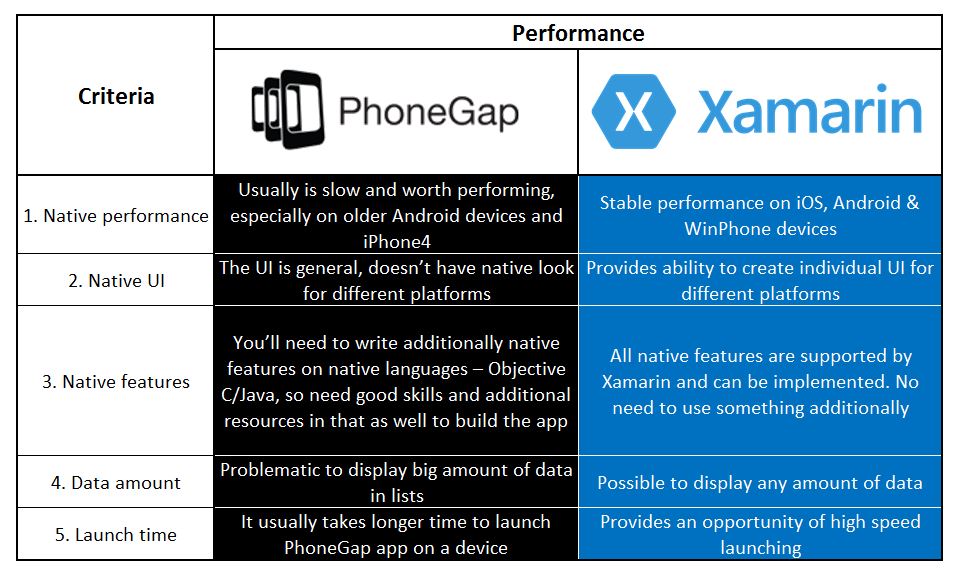
How to build an App – Start with App Documentation
You’ve decided to build an App… Great!
Now there are a couple of different ways you can start building your App – App documentation is the first step.
I’m sure some of your friends, colleagues must have advised you to attend a workshop to learn about building apps, take online courses, how to make money from them and what platforms to build them. But if you’re serious about building an app you probably understand the basic concepts as to how to go about it.
Some of your entrepreneur friends might have even advised you to get some investors on board. But you know investors don’t invest money on something which is just an “idea”, they’ll need to see something tangible. Investors are always on the lookout for a well researched, validated app idea that has a product-market fit and scalability.
For example, take the real estate projects, people don’t start the building process unless they have a solid building plan and some documentation on how to build it.
Similarly, with the apps let’s save the time by making the right move. Let’s take the “first step” towards developing the app idea, and that means app documentation.
At Appomate we help you start with documenting the app functions, needs, and scope for your app. We do this for free of charge so that you can show the documentation to investors and get your app idea – a validated cost estimate to built it.
That’s Right, For FREE!
Example of an SOW document for an app project in Melbourne.
Click the image above to download this template and complete your own app documentation.
Proper documentation will allow you to show investors, explain it to business partners, apply for government grants and most importantly in future there won’t be any surprises while you are getting a quote from anywhere because it’s all in the documentation.
Example of a scoping document for an app project built on an iWatch.
So don’t waste your valuable time attending workshops or taking advice from people. Remember investors will be interested in your app idea only if they can see some tangible results.
Get started documenting your app idea today, click here to find out how.
Call us today to find out more 1300 781 794
Responsive Web vs Native Apps: What’s right for you?
Recent years have seen a massive uptake of mobile applications by users. Therefore, having a mobile presence either as responsive web or as native apps has become a necessity for businesses rather than it just being a competitive advantage. Any business that does not have a mobile presence stands the risk of losing potential customers/users to its competitors.
In fact, many large companies like Uber adopted a mobile-first approach i.e. Uber developed its mobile app and built a business around it without ever building a website with all the bells and whistles that the app has. Having said that, there are companies like Facebook that start off as responsive web applications and then after generating enough revenue, delve into creating a mobile app to support their business.
However, even with a strong understanding of the need to have a mobile presence, entrepreneurs and businesses may find adapting an entire business to go mobile only – quite a task and often quite confusing.
So when you do decide to build your own mobile app, where do you invest? Do you invest in building a responsive web app or go directly to building a native app? To answer this question, we need to have a clear understanding of what “responsive web apps” and “native apps” are.
Are responsive web apps better than native apps or is it the other way around?
The answer to this question is: It depends.
There are a number of parameters that can help you throw light on what approach is the best for you. A few key factors are:
- Cost
- Time
- Quality
- Functionality
Let’s explore responsive web vs native apps in greater detail.
Image credit
5 Key Approaches: How to develop my Idea into an App
In the current app-economy, where everyone either has or is developing an app that is “the next BIG THING,” it is helpful to understand some of the most common ways to get started in developing your idea into an app.
The following are five different approaches to getting your app idea kick-started.
Learn to code
Yes, you heard it right! Learn the art of coding through platforms like Udemy or Codecademy, and get started with your relatively simple app idea. This is a time-consuming method ideal for those with much time on their hands, but no funds. It can take anywhere from 3 – 10 years to become reasonably good at coding and able to create a good app on your own.
Explore the DIY platforms
Are you looking to build a simple app with no sophisticated features, but don’t want to learn hardcore coding and are hindered by a lack of investment? Do-it-yourself app-building tools like Appmakr, AppInstitute, and AppInventor may just be the right thing for you. These tools make use of pre-built templates to quickly and easily create your app. Even better, many of them don’t even charge for using the service.
Build a virtual team
In this scenario, you build your team of developers, architects, UX designers, and testers through outsourcing platforms.
A number of websites like Upwork.com, Freelancer.com, and Guru.com provide easy access to a large pool of app developers from across the world. Cloudpeeps.com is a good one to find a higher-quality digital team. There is an obvious cost advantage to this approach. However, you had better be a good project manager as the buck stops with you. Coordinating people around the world will take more time and effort than you might originally think—especially if this is your first time doing it.
BYOT: Build Your Own Team
If you are really confident about the success potential of your app idea—say you’re convinced to have the next Uber or Airbnb—and you have secured some good funding, you may build up your own development team and management structure.
This approach is typically for those who have been down this path before building successful businesses, are funded, or know how to raise millions in investment. This approach is probably the most expensive but the quickest and where you have the most control. You can also find good programmers who will build the app for equity in your business. It is not easy though as good programmers often either work on their own idea or get paid really well by tech companies. This is another example where your sales skill can help to sell the value of your app and have someone to quit their job to join you as a partner to build your idea.
Find a development partner
An experienced app development firm can act as your development partner to help you get your app from the idea stage to the profitability stage. Entrepreneurs looking for holistic support must perform due diligence before partnering with an app development firm to obtain the highest level of quality, reliability, and promptness. This approach is for entrepreneurs who have a budget to get the project off the ground, and typically well suited to those who are running another business or performing a “day job” while the app development is happening in parallel.
Entrepreneurs looking for holistic support must perform due diligence before partnering with an app development firm to obtain the highest level of quality, reliability, and promptness. This approach is for entrepreneurs who have a budget to get the project off the ground, and typically well suited to those who are running another business or performing a “day job” while the app development is happening in parallel.
Ultimately, the best app kick-starter approach depends really on the resources you have—time, skills, and money, and how advanced your app is. Building your own team or using a reputable development partner increases your chances of success. Although virtual teams and freelancers may work out as a cheaper option, I am yet to find any success stories using those approaches.
If you are an Entrepreneur looking for resources to build your App business, here’s a step by step guide, Create your App and Grow Rich written by B Kris – Founder, Appomate.
